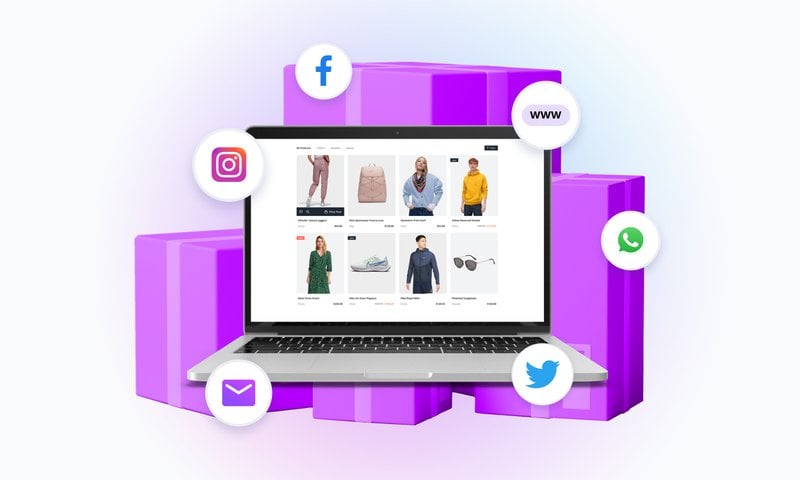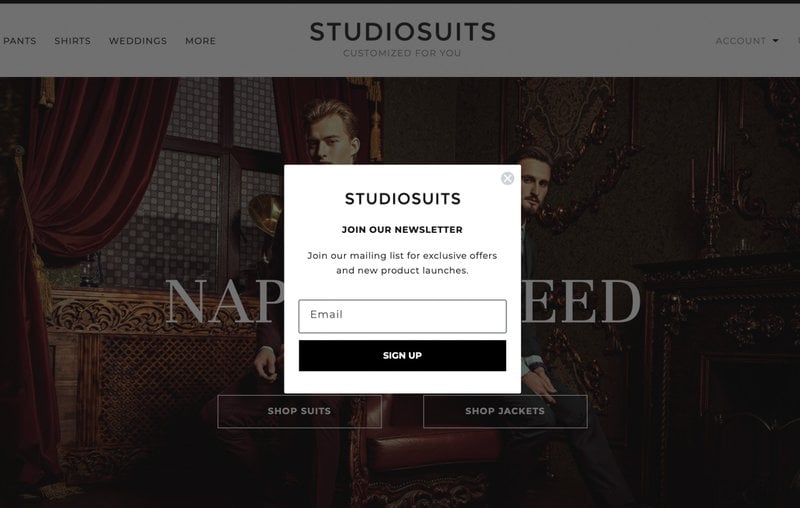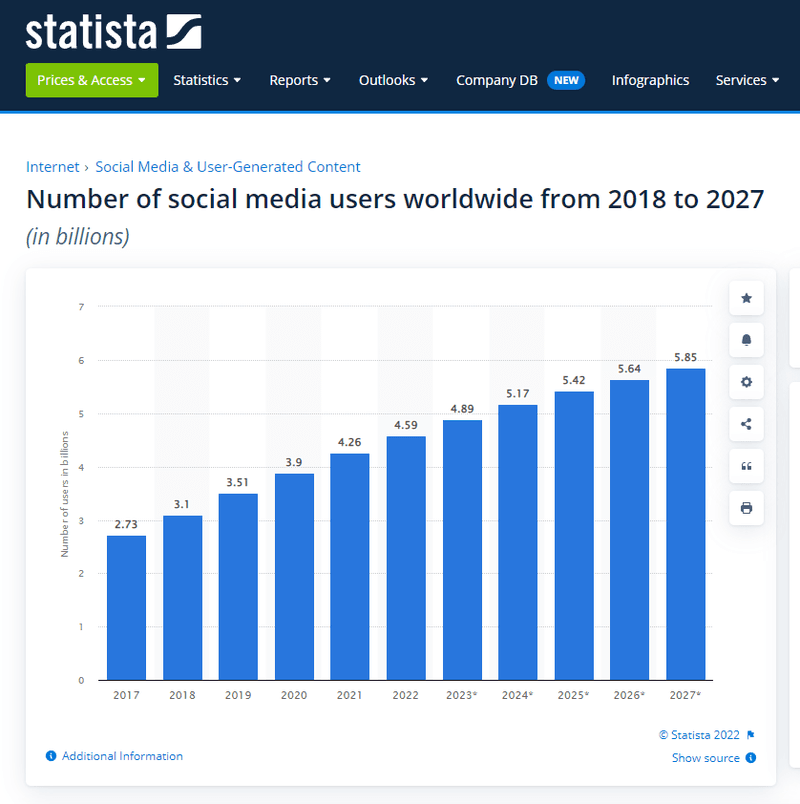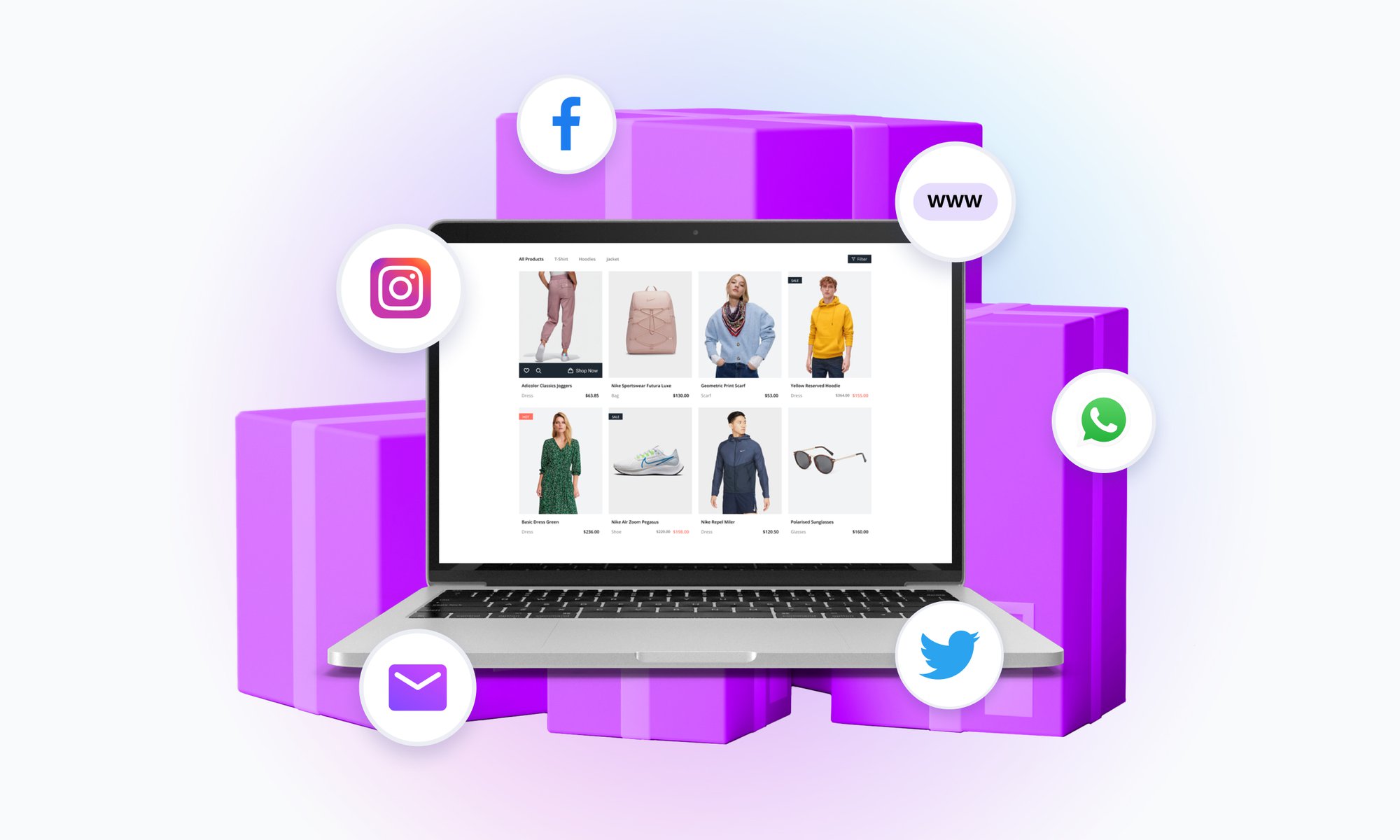Do you ever think promoting your online store feels more like a chase than a marketing initiative?
You’re not alone.
In fact, marketers believe that generating traffic and leads will be their biggest marketing challenge in 2024, with “hiring top talent” following close behind.
The solution?
Every online store needs a solid marketing strategy arsenal — and a willingness to pivot and course-correct when needed.
If you’re ready to build a robust eCommerce channel, we’ve finalized the top tips and tricks you need to be applying in 2024.
Ready to learn more?
Let’s build your marketing strategy arsenal together, step by step.
TL;DR
- Your audience needs to feel seen, understood — and most of all — they need to believe that your product will deliver tremendous value to their lives.
- Create an SEO strategy that focuses on user intent and your unique brand goals.
- Generate quick cues by choosing a few pillar images and styles your brand represents.
- Spend time mapping out the various buyer journeys your customers usually take and the processes they use to fulfill each step on their journey. Decide how your brand can support them to streamline each process.
- Segment your audience and personalize your email marketing approach to each segment.
- Use push notification marketing to generate FOMO deal buzz, send gifts and swag links, remind your audience of any upcoming promos, and keep shoppers in the loop about when their orders will arrive.
- Nurture your social media audiences and take advantage of social selling.
- As with any business endeavor, dedicate ample time researching each eCommerce marketplace available so you can pinpoint which ones make the most sense for your goals and your audience’s needs.

1. Demonstrate value by educating your audience
Nurturing your audience to convert them takes time.
Your audience needs to feel seen, understood — and most of all — they need to believe that your product will deliver tremendous value to their lives.
So, how can you demonstrate value to them repeatedly?
Simple: Educate them.
With informational marketing techniques, such as blogging, creating knowledge bases, and sharing educational digital downloads, you can show your audience detailed ways your products improve lives.
Even personal brands do it. As Shaun Connell, blogger and marketeer, has shown in his blog about personal finance; you can educate people and demonstrate what you’re talking about, generating trust.
In other words, when your audience clearly understands how your products work and how they can enhance quality of life, investing in your brand will feel like a no-brainer.
From there, you’ll just need to make sure you’re not alienating an audience segment due to pricing, customer experience issues, or lack of personalization. More on this in a bit.
How to demonstrate value
Ready to take on this best practice?
Start with an SEO strategy that focuses on user intent and your unique brand goals.
Then, note common audience pain points and questions you’ve uncovered from your internal systems — for instance, from your customer service (CS) tickets, social media comments (use a social listening tool), feedback forms, surveys, and reviews.
Don’t forget to check forums like Quora, Reddit, and WikiAsk, too, for a closer look into common shopper pain points straight from everyday shoppers, themselves.
Then, start planning your article topics, keywords, and posting dates.
Finally, assign topics out to writers, create an editing and quality analysis (QA) plan, and schedule your articles to post on your blog, knowledge base, and/or as digital downloads.
For instance, if you sell digital financial products, like tax software, or retail banking products, such as debit cards for teens, you might have audience members interested in topics like:
- Tax prep 101
- Tax solutions for remote business owners
- How to open a teen checking account
- How to start investing early
Your audience might be craving articles like this one about how to invest as a minor or teenager:

Or your audience might be looking for tax prep tutorials and small business budgeting best practices.
Whatever the case may be, always keep your audience’s needs top-of-mind by planning your content based on search intent.
2. Leave an impression with professional and consistent branding
In a study where blindfolded participants tried Coca Cola and Pepsi, it was found that people preferred drinking Pepsi over its rival competitor’s drink.
But, what happened when the blindfolds came off?
The story changed.
Suddenly, most of the participants preferred Coca Cola.
Why the quick change?
Simple. Coca Cola has established a memorable, professional, and consistent brand.
Its special magic sauce? Consistent imagery and the gentle tug on emotion.
In fact, the study found that Coke was associated with increased activity in the medial prefrontal cortex in the brain. It concluded this may represent functions of the brain associating the soda with ads and, in effect, overriding the taste buds — incredible, right?
Think about it.
When you imagine Coca Cola, what images come to mind?
If you’re like many, you’re probably envisioning things like:
- Polar bears playing in the snow
- Bright Christmas red
- Vintage Santa Claus and nostalgic ads
- The holiday season
- The sound you hear when you crack open a fresh glass bottle of coke
- Famous actors and singers representing the brand on screen
- Children playing outside in the wintertime

Do you see where we’re going with this?
In other words, establishing consistent brand images is crucial to imprinting your brand in the minds of your audience.
So, how can you be more like Coca Cola?
Generate quick cues by choosing a few pillar images and styles your brand represents. For instance, that might include a collection of free vector images, digital illustrations, infographics, fonts, color choices, and avatars.
As far as your product images go, make your items stand out and look professional by using a background remover tool. Then, add a simple white, black, or colored background to all of your product images so they look congruent. You can also stick to a range or a specific palette if your brand is a fan of color.
3. Create a buzz by delivering a pristine customer experience
From securing fast and reliable courier services to responding to customer support tickets right away, create effortless processes that support shoppers along every customer touch point.
To make sure you’re supporting shoppers no matter what, spend some time mapping out the various buyer journeys your customers tend to take.
For instance, one buyer journey might include:
- Finds your store on Instagram
- Follows you on Instagram
- Signs up for your newsletter to grab a free coupon
- Stalks your email content
- Visits your site to see what products and deals you’re currently offering
- Stalks you on Instagram
- Sees your social proof on Instagram and it’s too good to ignore
- Finally uses their free coupon on your site and makes a purchase
And another buyer journey may look like this:
- Conducts a Google search for “women’s dresses”
- Finds your online store
- Peruses your line of winter dresses
- Signs up for 20% off their first purchase
- Goes back to look at your line of dresses again
- Adds their coupon and chooses a dress
- Heads to checkout but then abandons their cart
- Receives an abandoned cart email from you with an additional 10% off
- Takes advantage of their 30% off discount and finally makes a purchase

After you’ve laid out all of your buyer journeys, begin mapping out the processes your customers take to fulfill each step on their journey.
You must remember that you should never force your users to perform a procedure that you would be too lazy to perform yourself. However, canceling the procedure is not always the only solution. The most important thing is to keep your customers motivated to follow you step by step.
For example, StudioSuits offers its customers a subscription to their newsletter, knowing that they are eager to be informed about a new collection launch once it’s out on the website, which they will hear about the fastest from the newsletter. In such a case, users will never avoid spending an extra 5 minutes on your brand’s platforms.
After considering all this, decide how your brand can support them to make each process quicker, simpler, and more valuable.
4. Get closer to your audience with email marketing
Build meaningful connections with your audience by nurturing them via email marketing campaigns.
To make the most out of this tip, segment your audience and personalize your email marketing approach to each segment.
Consider using data tools like a customer data platform to improve how you store and manage customer data so you can access it easily whenever you need it.
Pro tip: Having a solid email list isn’t just marketing gold, it can also boost your business’ valuation — a must if you’re planning on selling your online store someday.
And speaking of selling your store one day, don’t forget to keep your data and software systems secure! Consider using cybersecurity software, like TSplus or VPNs to keep your store and your customers’ information safe.
5. Generate demand and inspire virality with push notifications
Use push notification marketing to generate FOMO deal buzz, send gifts and swag links, remind your audience of any upcoming promos, and keep shoppers in the loop about when their orders will arrive.
For instance, if you’re selling tickets online for an upcoming virtual pop-up, you can use push notifications to:
- Thank registrants for signing up for the event
- Send a product catalog link or related event downloadable
- Remind registrants about the upcoming event
- Send a link to purchase items before, during, or after the event
- Send promos and discount codes
- Announce new product drops and company updates
You can also use push notifications to enter shoppers into an automated welcome series, share recently published content, and point them to other relevant sales and marketing channels.
Push notifications are also perfect for initiating and running contests, surveys, polls, and giveaways. You can also use them to request product reviews and specific feedback — two invaluable ways to learn how to improve your brand and store items!
6. Nurture your social media audiences and take advantage of social selling
The number of social media users continues to increase at record speeds. In fact, over four and a half billion people use social media worldwide — an increase of over one billion users in just three short years.
By 2027, social media numbers are projected to increase to nearly six billion users.

With that in mind, it’s no wonder eCommerce stores are taking a hard look at the value of social media marketing.
We’re major fans, too.
That’s why we can’t say enough about the importance of nurturing your social media audiences and taking advantage of social selling.
To get started on both, outline your goals for each platform you use. Then learn how to interpret and apply each channel’s insights and analytics options.
For instance, if you’re on Instagram, get down to the nuts and bolts of how Instagram Analytics works and which tools you can use to make the most of them.
It’s also important to show up for your audience consistently so you can build trust and nurture them closer to conversion.
Here are some ways you can show up consistently, deliver great content, and take advantage of social selling:
- Spend more time on the channels your audience frequents most
- Use a social media scheduler to batch your content and post consistently
- Learn what pain points shoppers have and use your content to share solutions
- Discover your audience’s social selling buying patterns and cater to them in your promos and tagged products
- Use contests, viral marketing trends, and challenges to inspire virality
- Open social media Shops and tag your products in your posts, highlights, and Stories
- Add a link to your store in your social media bios
- Share your unique value statement in your social media bios
- Use a social listening tool to respond to brand mentions and grab visual product
- Clip brand mentions and use them as social proof in your email marketing campaigns, ads, and on your site
7. Diversify your approach by selling on multiple marketplaces
From Walmart to Amazon to Shopify to Etsy, there are many marketplaces you can use to diversify your store’s sales and marketing approach.
While diversifying your approach will require more responsibility on your end and a strategic vision for each channel, putting your eggs in multiple baskets can help you avoid the dreaded feast or famine months some stores face.
As with any business endeavor, dedicate ample time researching each platform available so you can pinpoint which ones make the most sense for your goals and your audience’s needs.
Wrap up
And that’s it for today, friends.
We hope the strategies and tips we shared today will help you build a robust eCommerce Channel that surpasses your audience’s expectations and supports you to reach your goals.
For good measure, here’s a quick summary of the tips we shared today:
- 1. Demonstrate value by educating your audience
- 2. Leave an impression with professional and consistent branding
- 3. Create a buzz by delivering a pristine customer experience
- 4. Get closer to your audience with email marketing
- 5. Generate demand and inspire virality with push notifications
- 6. Nurture your social media audiences and take advantage of social selling
- 7. Diversify your approach by selling on multiple marketplaces
To your success!
Author Bio:
Shane Barker is a digital marketing consultant who specializes in influencer marketing, content marketing, and SEO. He is also the co-founder and CEO of Content Solutions, a digital marketing agency. He has consulted with Fortune 500 companies, influencers with digital products, and a number of A-List celebrities.

